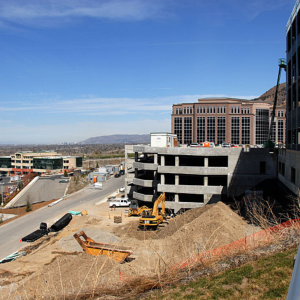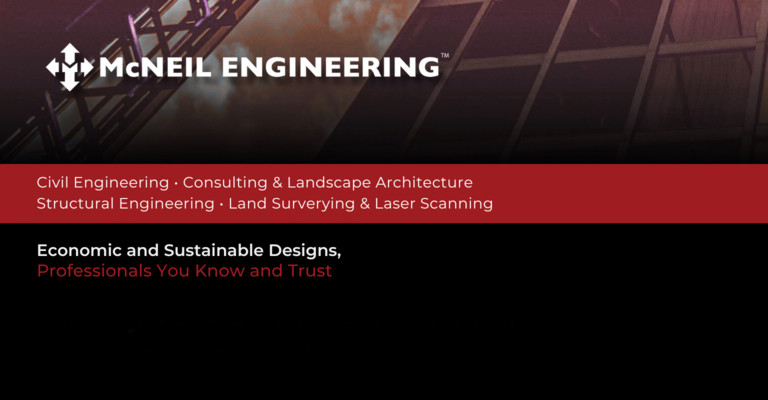 One of the aspects of our job as civil engineers that many people don’t think about is how we have to navigate bureaucracy. We have to work with regional and government authorities for almost all our projects to get the necessary permits and approvals for construction. There are a lot of different licenses and approvals that may come into play on a different project, but two of the most common are our access permits and encroachment permits. In this blog, we’ll explain what these permits typically mean and how they are usually issued in our home state of Utah by the Utah Department of Transportation or UDOT. Other regions may have different regulations and processes but generally follow the same guidelines, depending on local city and state laws. We know most of these regulations in our region and surrounding states and can help our clients secure the necessary permits.
One of the aspects of our job as civil engineers that many people don’t think about is how we have to navigate bureaucracy. We have to work with regional and government authorities for almost all our projects to get the necessary permits and approvals for construction. There are a lot of different licenses and approvals that may come into play on a different project, but two of the most common are our access permits and encroachment permits. In this blog, we’ll explain what these permits typically mean and how they are usually issued in our home state of Utah by the Utah Department of Transportation or UDOT. Other regions may have different regulations and processes but generally follow the same guidelines, depending on local city and state laws. We know most of these regulations in our region and surrounding states and can help our clients secure the necessary permits.
What are access permits?
UDOT issues access permits for construction or maintenance within UDOT’s right-of-way, which includes land alongside and surrounding state highways and roads. These permits ensure that any work done does not interfere with public safety, traffic flow, or the structural integrity of the road system. These are the three types of situations when UDOT requires an access permit:
- Whenever a connecting accessway, like a driveway or local street connection, is modified or built, including widening or moving.
- When there is a change in land use, including a zoning or site change plan, like the building of a new subdivision.
- When the intensity of the existing access point changes, for example, a road may be widened to accommodate the influx of traffic that may come with a new subdivision.
While the UDOT typically issues access points for the state, local cities and towns may also require permitting. Before starting any project, proper access permits are essential to avoid potential fines or liability issues. We often work with local municipalities and the UDOT to ensure we have the correct project permits.
Project Spotlight: Cedar Fort Estates
In our spring 2024 newsletter, we shared our process of surveying the first subdivision, Cedar Fort Estates, in Cedar Fort, Utah. This project involved turning the Arnold Family Farms land into a subdivision plat. As the process progressed, we had to work with the town of Cedar Fort to rezone the property from a 5-acre to a 4-acre zone. Then, we worked with UDOT to get access permits for a new connection onto S.R. -73. It was an exciting project that required our team’s extensive permitting knowledge to work with the Cedar Fort municipality team and UDOT to get everything in place.
What are encroachment permits?
Encroachment permits are needed for a wide variety of purposes, but the fundamental reason why you’d need one is if you plan to disrupt the flow of traffic for any purpose. For example, you’d need a permit for digging out utilities in a roadway, cleaning out utility holes, surveying, paving, aerial inspections above a roadway, or even having a crane over a roadway or right of way. These permits ensure that work will be done safely and issue a plan for access during the process. Applying for encroachment permits typically requires submitting detailed traffic control plans, getting adequate insurance in place, ensuring stormwater management and more. Most of our projects require an encroachment permit and must meet regulatory standards to preserve public safety and the integrity of roads and accessways.
Project Spotlight: Millrock Technology Park
When considering particularly challenging encroachment permits, one project that comes to mind is our work at the Millrock Technology Park. The five-lot technology park includes 500,000 square feet of office spaces terraced over four buildings with a 150-foot east-west slope. Because of this unique geographical feature, we had to work closely with UDOT to secure access and encroachment permits for the accompanying roadways and land. Ultimately, we designed a signalized intersection for the steep section alongside State Road 210 and developed a complex retaining wall system to protect the roadway. This project required us to coordinate with UDOT and several municipalities, which was a great challenge for our team. We won several industry awards for the finished project, including Best of State Project in 2009.
Why permits matter
Access and encroachment Permits are vital to preserving the functionality and safety of Utah’s road system. Improperly managed access points or encroachments can lead to increased accidents, traffic congestion, and costly repairs. As civil engineers, we help balance the development needs of our client’s projects with the smooth operation of the state’s transportation system.
Navigating the complexities of access and encroachment Permits is always a challenge. But with our 40 years of experience, we’ve learned how to make the process seamless and efficient. Our technical expertise and attention to detail have helped us develop a strong relationship with UDOT and local municipalities. When we apply for permits, our applications are clear, concise, and meet the project’s needs. When issues arise, we coordinate with UDOT and the necessary municipalities and regulatory agencies to find an amicable, structurally sound and efficient solution for everyone.
Permits may seem like a hassle during the development and construction process. They can take time to coordinate or require design changes, but they enhance public safety and contribute to the sustainable growth of Utah’s infrastructure. As engineers, we believe that permitting protects everyone, and we comply with all local and state regulations to ensure everyone’s safety.








